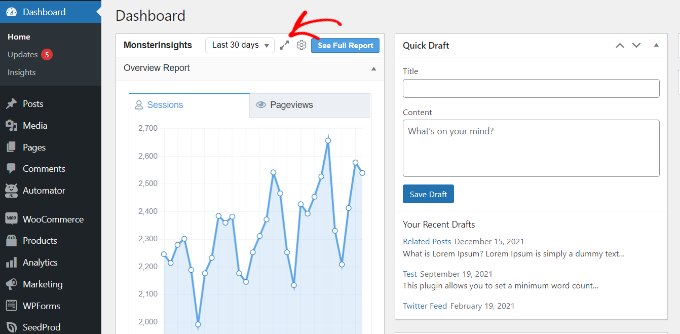Understanding how analytics work within WordPress is crucial for understanding the performance of your blog and guiding data-driven decisions. Measuring selected key metrics will help you improve content strategies, increase user interaction, and expand the audience base. The section below contains information on what you need to track through WordPress analytics and how to use it best.
Setting Up Google Analytics
Step one, therefore, is to include Google Analytics for your blog. It is through the great power of this tool that you realize and know the level of traffic on your website and the behavior patterns of its visitors. WordPress offers a few easy ways through which you could get this set up and running, such as MonsterInsights or Site Kit by Google. Using one of these or a similar plugin will even make installation relatively easy and presents dashboards in the standard WordPress admin panel in an easy-to-understand format.
Key Metrics to Monitor
Once you have analytics set up, pay attention to important metrics that will give insight into how your blog is performing:
1. Traffic Sources: Knowing where visitors are coming from organic search, social media, or referrals from other sites can even help make your marketing more effective; identifying which channels are most effective will therefore come through examining traffic sources.
2. User Behavior: The bounce rate, average session duration, and pages per session can tell you how people react to the content on your site. A big bounce rate may mean that the content on your site is not interesting to visitors; therefore, you need to adjust topics or make the navigation of your site better.
3. Demographics and Interests: Google Analytics is always good in providing with demographic data of your audience, including age, gender, and interests. Such information is precious in tailoring content that attracts the target audience as well as enhancing the marketing strategies.
4. Content Performance: Knowing which of your posts or pages are garnering the most traffic can help you understand what you have created that is actually sticking with your audience. Listen in on page views and time on page to get top-spots performing articles. This insight can then be used to reporduce the successful content strategy of your future posts.
Usage of Goals and Conversions
Setting up goals in Google Analytics is important to track the specific actions you want visitors to take, whether it is sign up for your newsletter, eBook download, or a purchase. They let you measure your blogging success in terms of conversion. This data identifies what pathways your visitors have taken through your site and which areas are underperforming so that you can improve them.
Heatmaps
While quantitative data in Google Analytics are incredibly robust, heat maps give a qualitative view. Tools such as Hotjar or Crazy Egg represent user interactions with your website by showing exactly where visitors click, scroll, and spend most of their time. This gives you insight into how users navigate your blog, and you know better where to really optimize call-to-action placement or content layout.
Periodical analysis and reporting
To really maximize your analytics, establish an ongoing process to review and report on your insights. Monthly or quarterly checks on analytics can keep you updated on trends, the effect of recent changes, and help you make decisions for the future. You may also establish summary reports detailing key metrics and actionable insights that could help be more communicative about your performance to your team or stakeholders.
Most importantly, with the help of WordPress analytics and the setup with Google Analytics, focusing on the right metrics, along with getting other additional sources for instance, heatmaps, will make you know exactly what is happening with your audience, to what extent are they interested in it, and which things engage them. Therefore, periodic analysis and reporting will enable you to keep agile and adjust your content strategy according to your readers’ needs and requirements, and thus finally enhance user engagement that will only contribute to the growth of your blog.
